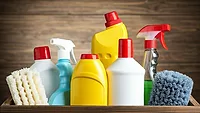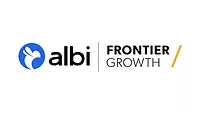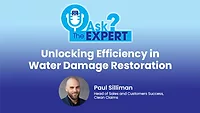The Next Frontier in Water-Damage Restoration

During the last three decades, the water-damage restoration market has grown from a relatively obscure idea to a major industry in the United States and Canada, with the rest of the international market rapidly closing the gap. There are now tens of thousands of professional water-damage restoration firms throughout the country ranging in size from a few employees to hundreds, ready to respond 24-7.
Even though the industry’s growth has been impressive, the water damage restoration business is still relatively new, and like all businesses, a learning curve exists. Think back (if you can) to those early years, to the response you received when you marketed a drying service to the insurance adjuster by saying, “I am going to blow air into your building and send you an invoice for it.”

The Beginning of the Business
The beginnings of the drying business, the “new frontier,” can be found in the carpet-cleaning industry in the 1970s. Those early “settlers” recognized that a fan could help dry a carpet quicker, and offered and advantage over a competitor by allowing the client to return to their home or office sooner with the use of this “specialized drying equipment.” How was this accomplished? Set up a fan to circulate the air in the area containing the carpet, and, if you directed the air over the carpet with a dehumidifier providing the “goes into” for the fan, it dried even quicker. Voila: the owner of the carpet cleaning business now had an opportunity to use existing labor and low-cost equipment to expand the business into a new area, specialty drying.The best part of this new frontier was that pricing for services changed from a square-foot-invoicing competitive market to pricing based on time and materials. This change generated a significant increase in bottom line profits. Now an owner could send out their carpet-cleaning labor with a few off-the-shelf dehumidifiers and air movers to customers who experienced water damage. A couple of visits would follow to ensure that the property owner was happy, and an invoice was sent for the “water damage restoration service.” Depending on how good of a marketer you were, the adjuster could usually be convinced to pay you directly for the drying service.
Now, did these new “settlers” justify what they were doing? Just look at the little or no documentation provided (only an invoice?) to the property owner describing services rendered. Many questions remained: What equipment was used? What did the customer pay for? And most important: would the documentation be sufficient for the insurance company to cover and reimburse customers for the loss? There were a few visionaries in the market who understood early on that reporting specific equipment for drying, application procedures, and “skilled labor” would assist in settling the claim, but this was the exception rather than the rule.

The Growth of an Industry - The "Wild West" of the ‘80s
As the benefits of drying vs. replacement became more accepted, the water-damage restoration business expanded rapidly. The “new frontier” transformed into the “wild west,” with business models developed for many independent companies to make better use of capital investments. It became obvious that income from equipment rental provided a greater return than carpet cleaning whether you were charging labor or using unit cost pricing.The water-damage restoration business also caught the eye of cleaning and mitigation franchisors as a way to expand their services (and the resulting royalties) to the franchisee. Networks of independent contractors also saw an opportunity to market collectively and pool their resources on larger jobs. Opportunities to provide drying services quickly expanded from the residential market to the commercial and industrial markets, especially when the return on a single commercial job generated the same profit as 100 residential jobs.
The documentation to cover the services rendered was now being reported in an expanded invoice, with some of the details regarding the water-damage restoration services provided. Usually this consisted of a few pictures and a handwritten drawing of the structure included with the invoice. Still, the same questions were asked: What did you do? What equipment was used? What did the customer pay for? And again, would the insurance company cover the claim? There were additional questions now being asked as well: What was wet? How long did it take to dry? Do we know why things dry? Why was it dried and then disposed of during the reconstruction process? Clearly, the documentation had not kept pace with the growth and understanding of the industry.

Advancing the Technology of Drying - New Settlers in the ‘90s
Ah, at long last, we knew what we were doing. The equipment improved. Manufacturers redesigned their dehumidifiers, air movers and air scrubbers, and instruments now measured GPP without using those circular slide rules. Large areas could be quickly scanned for moisture using infrared cameras or instruments using radio wave and resistance technologies. However, skills were now required to operate this equipment; to understand what was wet; how it will dry; vapor barriers; psychrometics; and how to effectively apply and use the tools of the trade.Drying schools began offering the certified educational programs that would eventually lead to the development of industry standards. Project managers and technicians became “certified” to do a water-damage restoration job. The graduates now knew how the drying process worked and how to utilize the equipment in the best way possible to dry the structure. A third-party organization was formed and, working with committees from the industry, developed the first edition of a water-damage restoration standard with suggested guidelines for the professional.
While all of these advances were happening, however, the same questions posed a decade earlier were still being asked: What was done? What equipment was used? What did the customer pay for? Will the insurance company be covering this and will the customer get reimbursed? What was wet? How long will it take to dry? What are the psychrometrics of the drying chamber? Do we know why things dry? And why was it dried and then disposed of during the reconstruction process?
To begin to answer these questions – and provide the adjuster with a cost to set the reserve for the loss – estimating programs were developed. The estimates detailed the labor, equipment and “common” job activities taking place, but these reports still did not address what was actually happening at the job. Questions remained unanswered: What areas are wet? How wet were those areas? What is the source of the water? How was the drying equipment applied to create a drying chamber? Did the material / structure dry to its normal state of equilibrium? How much labor was used and what were their qualifications? What instruments were used to determine the moisture content and have they been calibrated? The market had matured, but did the adjuster and the property owner receive a complete report on the project that answered all of the questions? Would the adjuster who wanted to re-inspect the property have enough documentation to justify the restoration company’s actions? Would the property owner have the necessary documentation for future reference if they have additional problems, or to make a report if the property was sold? The learning curve continued.

Mitigation Validation - The Next Frontier
Fast forward to today’s business; we have dehumidifiers, heaters, air movers and ancillary equipment specially designed for drying, and that require a significant outlay of capital to acquire. The labor to properly apply this equipment requires additional training and on-the-job experience.The new buzz for the water damage market, “mitigation validation,” asks some questions you may have heard before: What was done? What equipment was used? What did the customer pay for? Will the insurance company be covering this and will the customer get reimbursed? What was wet? How long will it take to dry? What are the psychrometric conditions both inside and out at the jobsite? Why do certain things dry? And why was it dried and then disposed of during the reconstruction process? The answers to these questions are now being demanded by the insurance industry and the customer and, potentially, by a third-party working for the carrier.
Proper documentation of the water-damage remediation process showing application of assets, and comparing the results with recognized standards, is the wave of the future.
So, what guidance is out there for proper documentation? The best place to start is the IICRC S500, Third Edition. In Section 8, the documentation suggested during the water-damage restoration process is specific. In addition to gathering the normal administrative information, items to be tracked include labor; equipment; psycrhometric conditions (both inside and outside of the damaged area); moisture content of materials, and the establishment of drying standards.
The purpose of tracking, documenting and comparing this information on a daily basis is three-fold: proactively manage the resources required for the drying process, provide details to analyze the conduct of the job, and reduce the contractor’s liability by establishing what was done and not done.
Proactively managing the resources refers to the effective and proper application of equipment, labor and time. Strategically, this means looking at the “Big Picture” first. Once you have taken into account the Big Picture, you can then begin focusing the specific application of equipment on the damaged area. The excellent article, “The S500 Approach to Determine Initial Equipment Usage” by Jim Holland in the fall issue of R&R is a great reference for anyone unfamiliar with, or who might need a refresher on, equipment application guidelines. Once you are clear on determining skills required to establish the extent of the damage, you can move on to the other questions that need to be answered. Just remember, when the determination of conditions is required to establish a baseline for the drying process, mapping and documentation skills are necessary.

So where does the water-damage industry seem headed in the next few years, and what can you do to prepare? First, the movement of information, or the “mitigation validation,” seems to be a requirement on all jobs. Second, the demand for access to this information will increase substantially, through remote monitoring, third-party access to your records and real-time analysis. And finally, the customers and the insurance industry will want to know what is going on at the job, and why it is being done.
As the market becomes more and more competitive, differentiating yourself from the competition will remain a key to success. Creating or implementing a documentation system properly covering all aspects of the job process will become more and more important as the “learning curve” continues. Once you do choose a documentation method, make sure the system can be easily understood at some undetermined point in the future by the adjuster, a third party, or a member of your organization. Justify why you applied your equipment and labor in the way that you did in reference to the S500.
Read the S500; can you provide the standard that it asks for? Being able to clearly explain your actions now or three months from now will help you justify costs, impress your clients, and reduce your future liability helping you to succeed in the future
Looking for a reprint of this article?
From high-res PDFs to custom plaques, order your copy today!







